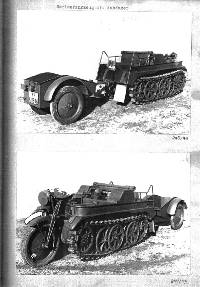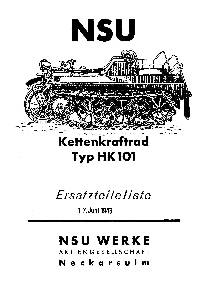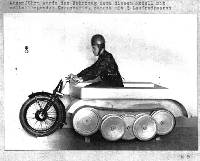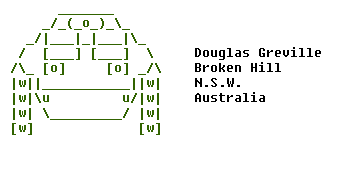
| T A N K S | C A R R I E R S | G U N S | A R M O U R E D C A R S |
The Kettenkrad.
One of the more unusual vehicles produced for the German military in WW2 was the Kettenkrad. The vehicle is best described as a "tracked motorcycle", although this is technically inaccurate. It can seat 3 people.
Ketten translated means 'tracks' and krad is the short form of "Kraftrad" and translated means motorbike. (There is rarely such a thing as a 100% direct translation).
Mechanically, it has a 4 cylinder car engine, track brake steering (aswell as the motor bike style handle bars, which serve a similar prupose to the later model English carriers in that small steering corrections don't apply the track brakes).
The tracks are fully rebuildable; there are lots of needle rollers and seals and although time consuming to do, it means that you don't end up non-mobile with a dead set of tracks which is an inevitable event with carriers; replacement rubber track pads are dear, but available.
Because of the track design the Kettenkrad is good for up to 44mph = 70kph which to say the least must be some experience!
The German forces used these vehicles for just about everything, including towing aeroplanes! Supposedly they were the last vehicle to be immobilised by the depths of the Russian winter.
Here are some Kettenkrad pictures. They are all from Andreas in Germany who is currently restoring one of these vehicles...
Download the big pics by clicking on the small pics... Kettenkrad -Photo 1
Here is a view of the driver's controls of the Kettenkrad.

|
|
Kettenkrad -Photo 2
Here is a general view.

|
|
Cover sketch -Photo 3
Cover sketch from the June 1943 'Spare Parts List'.

|
|
|
|
In service -Photo 5
A nice picture showing the machine in it's element. Russian front perhaps?

|
|
Post war model -Photo 6
A photo of a post-war Kettenkrad. These vehicles were a continuation of the wartime vehicle but with a few modifications. They came about due to the appeal by many Germans to the Allied powers to be allowed to produce machinery for post-war agriculture this offset the non availability of farm machinery which had crippled the economy. The Allies designated the Kettenkrad as a non fighting vehicle and allowed production to recommence using the remaining parts and facilities.

|
|
Diagram of Cletrac steering/braking -Photo 7
How the Cletrac steering/braking system works. Note that the steering brakes(#8) are seperate to the vehicle brakes (#12).

|
|
Mock up model -Photo 8

|
|
Mock up model -Photo 9

|
|
Drive it or ride it?
I have tried to get Andreas to tell me whether you "ride" a KK (like you "ride" a motorcycle) or "drive" (like you "drive" a car), but eventually he said 'you are using English terminology, in Germany, the operator is the "fahrer" ': so I didn't really get a straight answer. I suppose we could say you "fahr" a KK?
I have no doubt he will think my German atrocious when I ask to "fahr" his KK!

 BACK TO INDEX BACK TO INDEX |